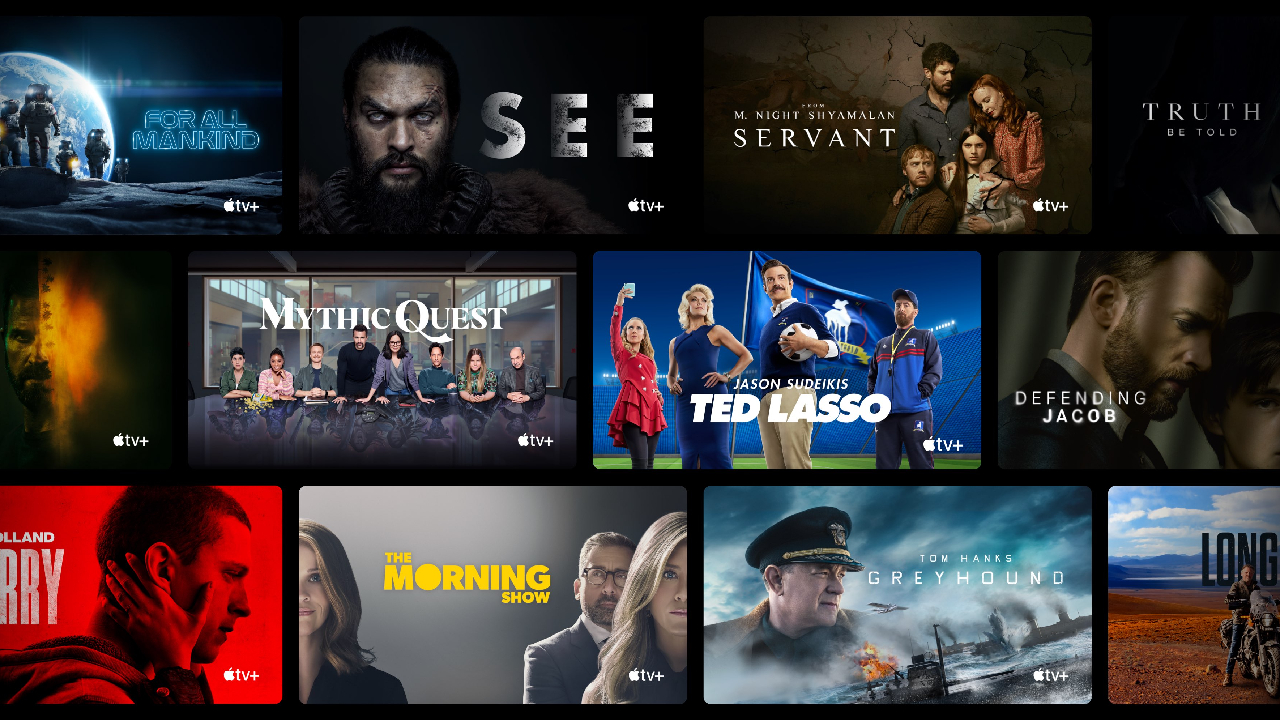What Hi-Fi? Verdict
The NS7 is a practical solution for situations where a directional but open sound is wanted, but it fails to deliver a convincing overall surround sound experience
Pros
- +
Creates a localised but open soundfield
- +
Can be used at same time as a soundbar
- +
Excellent feedback rejection
Cons
- -
Atmos presentation is cluttered
- -
Large gap at front of soundfield
- -
Weak low end
Why you can trust What Hi-Fi?
If you’ve ever found yourself wishing you could listen to audio in a highly localised personal soundfield that follows you around without the unwanted isolation and pressure on your temples of headphones, then perhaps you’ve considered a neckband speaker such as Sony’s premium SRS-NS7. Perhaps you've then cringed at the thought of, a) being that person who forces other people to listen to their music/phone conversations and, b) looking slightly silly.
Undoubtedly draping a horseshoe-shaped speaker across your shoulders and going about your business in public will raise a few eyes and ears, but there are plenty of domestic scenarios where the SRS-NS7 is very successful as a practical and portable audio device. However, this is a speaker specifically designed with home cinema in mind, and, despite its 3D audio credentials we can't stick our neck out for it.
Price
Priced at £269 / $300 (around AU$466), the SRS-NS7 is one of very few high-end neckband speakers currently available since Bose discontinued its SoundWear Companion speaker in 2021.
Sony also produces a more affordable model, the lightweight, non-Atmos Sony SRS-NB10, priced at £150 / $150 (around AU$250). Panasonic has a four-channel gamer-focused Soundslayer costing $200 (around £164 / AU$286), but otherwise, there aren’t many big-name manufacturers to compete with Sony in this area, and with Dolby Atmos onboard, the SRS-NS7 is something of a unique product.
Build & comfort
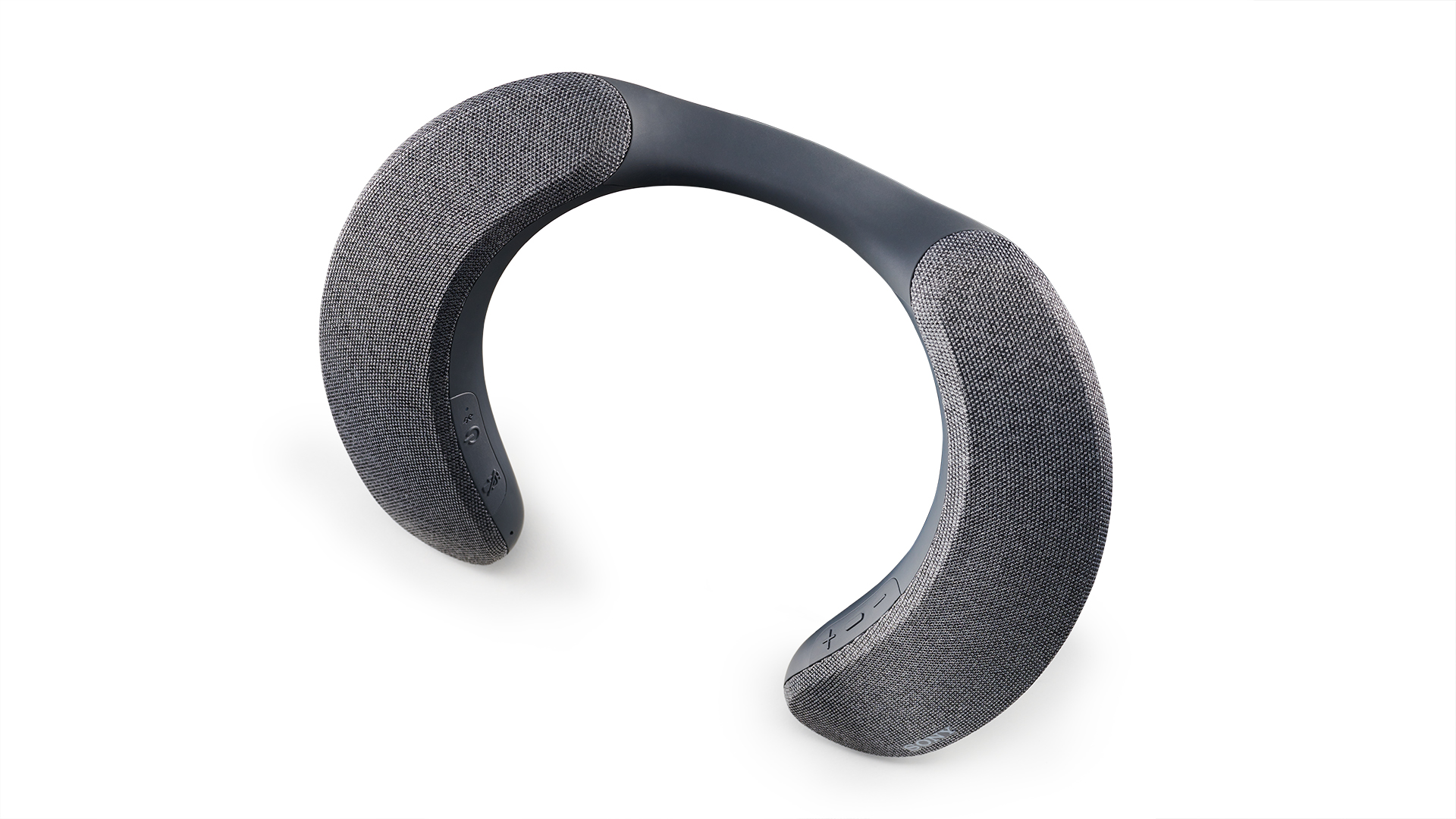
Like most neckband speakers, the SRS-NS7 has a slightly pliable U-shaped design, worn on the shoulders with a gap in the front centre. Around midway down both sides, sitting just above the collar bone, are a pair of upward-firing full-range X-Balanced drivers that use a non-circular shape (3.2 x 3.3cm) to maximise the area of the diaphragm for increased sound pressure. Behind these are a pair of passive radiators to help boost the neckband’s low-frequency response.
At 318g, the SRS-NS7 is a similar weight to a pair of over-ear headphones but isn’t intended to use any clamping force to stay in place and, in general, is relatively comfortable to wear for long periods. Cased with silicon, the underside is wipe-clean but doesn’t offer any padding, and despite its flexibility, the lack of size adjustability means that for some, the speaker may be a touch tight.
The top surface is covered in grey fabric, and the unit has an IPX4 rating making it resistant to splashes. On the inside edges sit two sets of controls, one for power and Bluetooth pairing and one for volume, as well as a covered USB-C port for charging and an in-built microphone. The unit has a claimed 12 hours of battery life, though when listening at loud volumes we typically find this is halved, and while a 10-minute charge yields an hour's extra life, the speaker cannot be used while charging.
Features
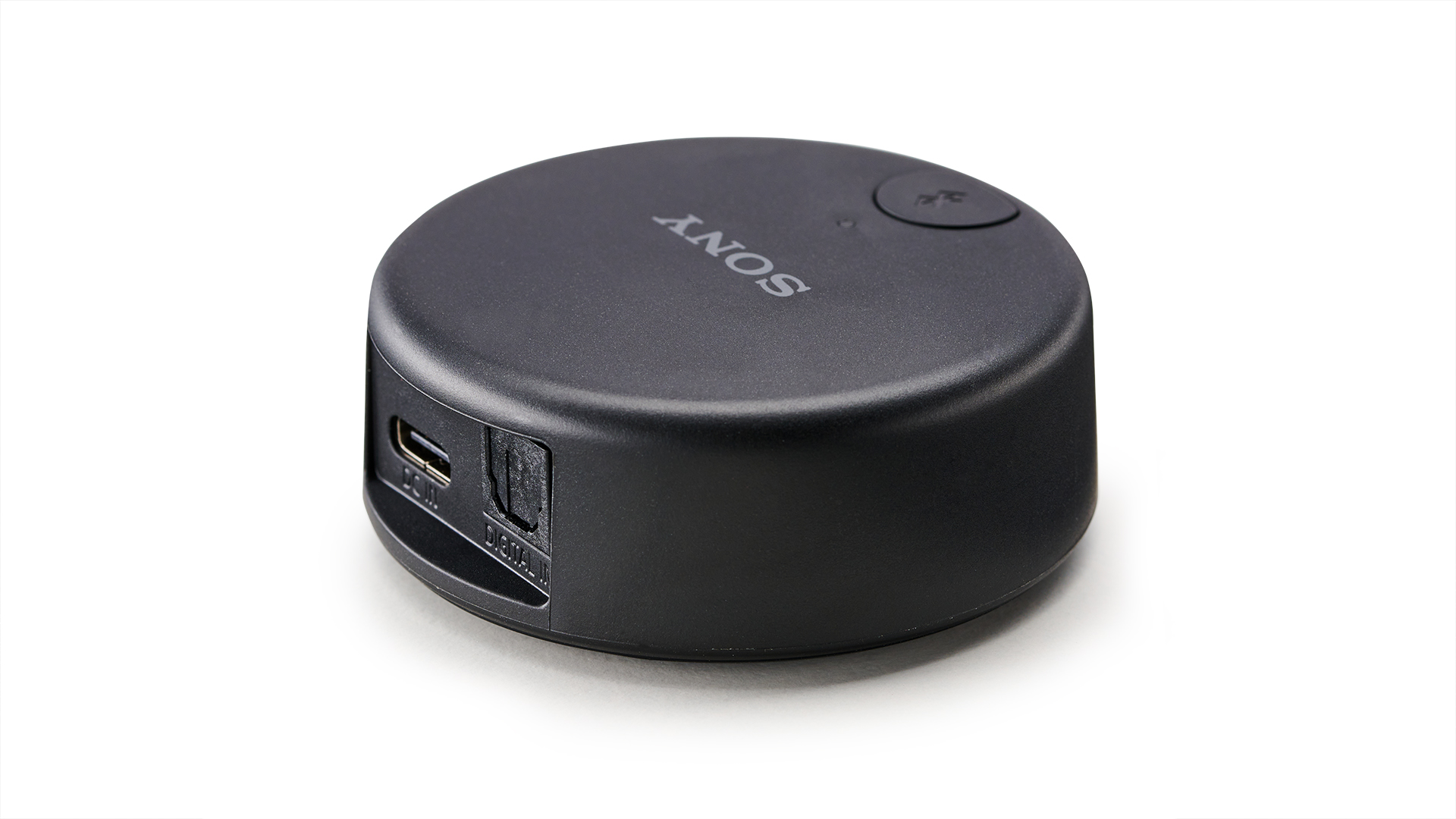
Connecting to the Sony Headphones app gives users access to additional controls, including a five-band EQ and a latency setting that can be set to prioritise audio performance or connection stability. We use the former for most of our testing without experiencing any dropout.
In both the Headphone App and Sony’s 360 Spatial Sound Personalizer app, there are options to customise the performance of the SRS-NS7 by uploading a photo of your face and ears, which Sony then analyses to build a custom profile. While we’re generally pretty sceptical about this process, after creating a profile, the sound performance of the SRS-NS7 is slightly improved, with more level and a slightly broader low-mid range.
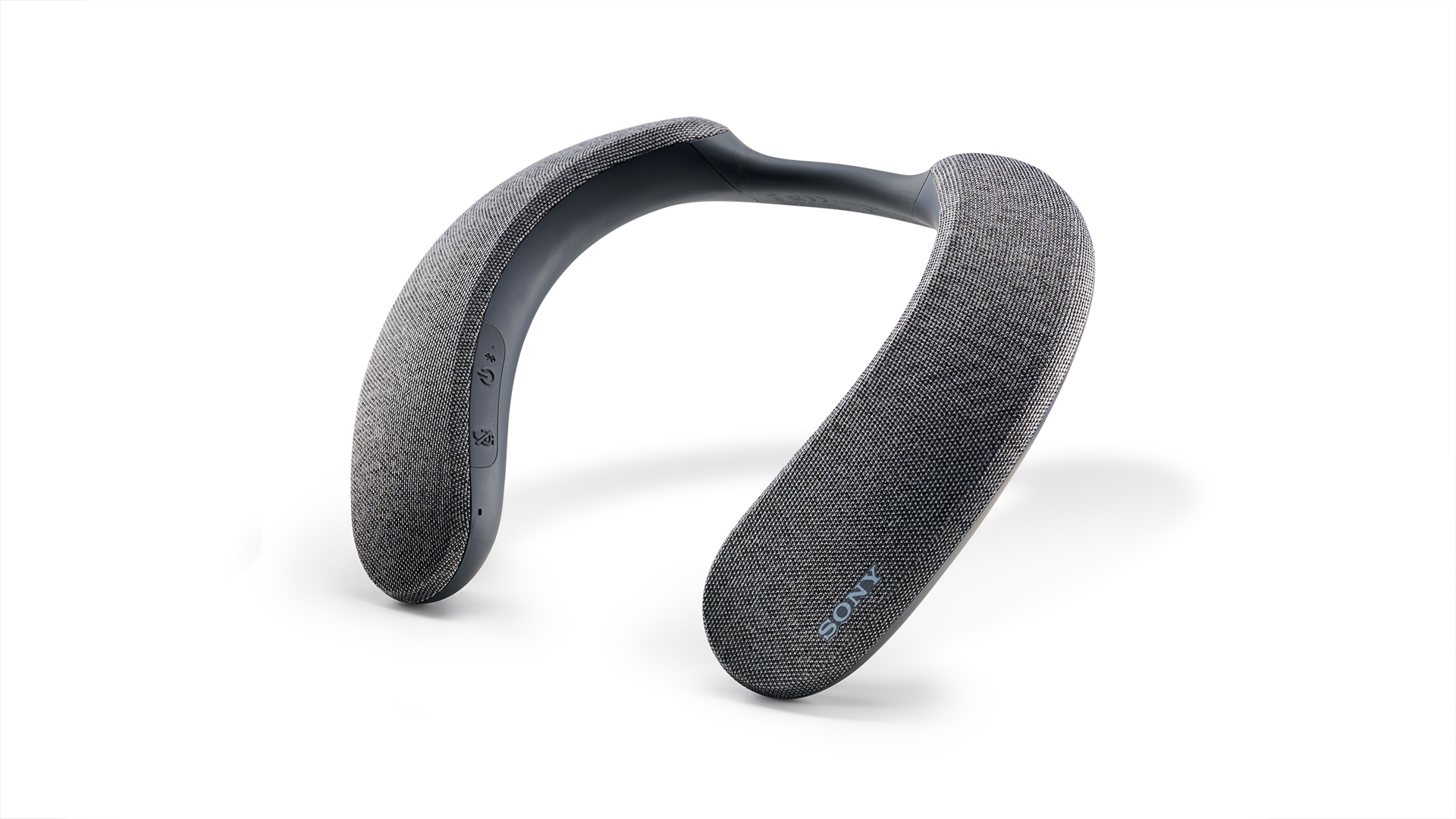
Bluetooth SBC, AAC, LDAC
Battery life 12hrs
Charging USB-C
Built-in mic and controls Yes
Finishes x1 (grey)
With Bluetooth 5 on board, supporting LDAC, AAC and SBC codecs, the SRS-NS7 can link directly to portable devices and TVs. But included in the box is Sony’s WLA-NS7 wireless transmitter, which connects to any Sony Bravia XR TV via optical and USB cables (also included) and acts as an interface between the TV and speakers, reducing the latency of the Bluetooth connection.
Shaped like a small puck, the WLA-NS7 can also be purchased separately for use with Sony headphones (£50 / $60 / around AU$87). It can be used with any TV to improve Bluetooth stability and latency, but only when it's connected to a Bravia XR TV does it transmit a signal that can be up-mixed to virtual Atmos.
Settings for the puck can be found in the TV’s ‘remotes and accessories’ menu, where 360 upmixing can be toggled on or off. Although the SRS-NS7 can connect to two devices simultaneously, when one is for music playback using the A2DP protocol and the other for communication using HFP, we were unable to connect via the app while using the neck speaker with the WLA-NS7 transmitter. This meant we could not tweak the EQ while watching films, but we find that keeping the EQ flat generally provides the best overall performance with most content anyway.
Sound
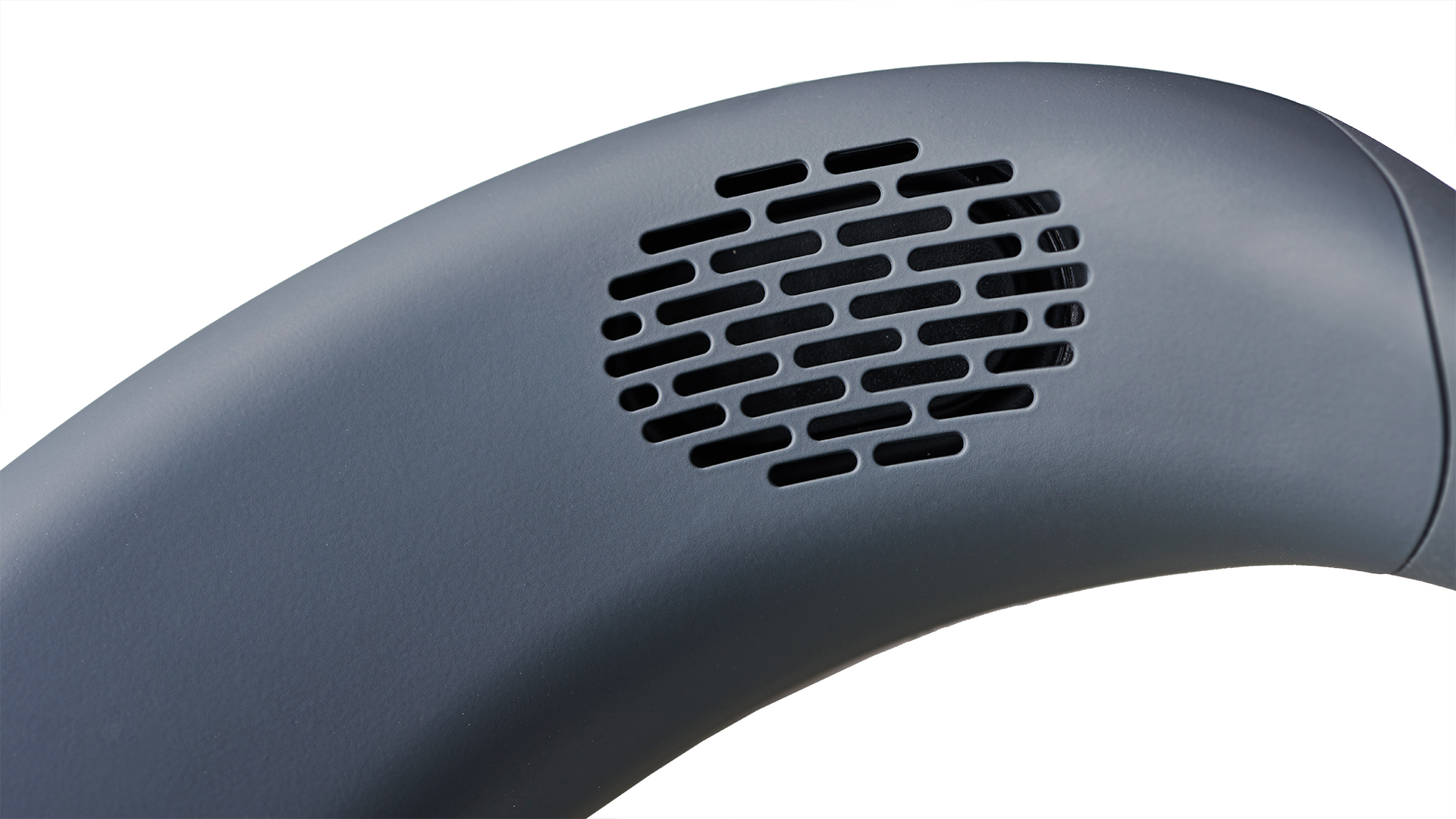
Starting with The Dig on Netflix in Dolby Atmos, we can immediately appreciate the 3D technology that the SRS-NS7 offers, spreading high-frequency atmospheric effects such as rainfall and chirping birds around us with some sense of directionality.
However, this isn’t as convincing with lower sounds, such as ominous distance thunder, and the heavily processed sound detracts from the authenticity of the soundtrack, particularly with voices that feel unnecessarily reverberant and fuzzy. What's more, Sony’s spatial technology cannot hide the fact that the sound is being produced at the sides and rear of your ears with what feels like a fairly gaping hole in the front centre.
Turning off 3D sound helps to clear things up, bringing dialogue further forward, and on the whole, it feels anchored to the screen. Given that they are perpendicular to your ears, the drivers' focus is pretty well targeted, and despite initial concerns that the soundfield might be too indistinct and open, we instead find that it is often difficult to hear ambient noises while listening to content.
The SRS-NS7 is still less isolating than open-backed headphones, though. It is undoubtedly audible to others within the same room, but the sound is directional with a short throw, making it well suited to those who might want to watch films without disturbing others in the same household.
When 3D sound is turned off, a TV can output audio to both a soundbar via ARC/eARC and the SRS-NS7, meaning that if one person is hard of hearing, they can enjoy a more targeted sound source than others in the same room without the unsociability of headphones. We tried this set-up with a Sonos Arc, and by delaying the audio to the soundbar slightly in the Sonos app, we could use both sources simultaneously without one affecting the other significantly.
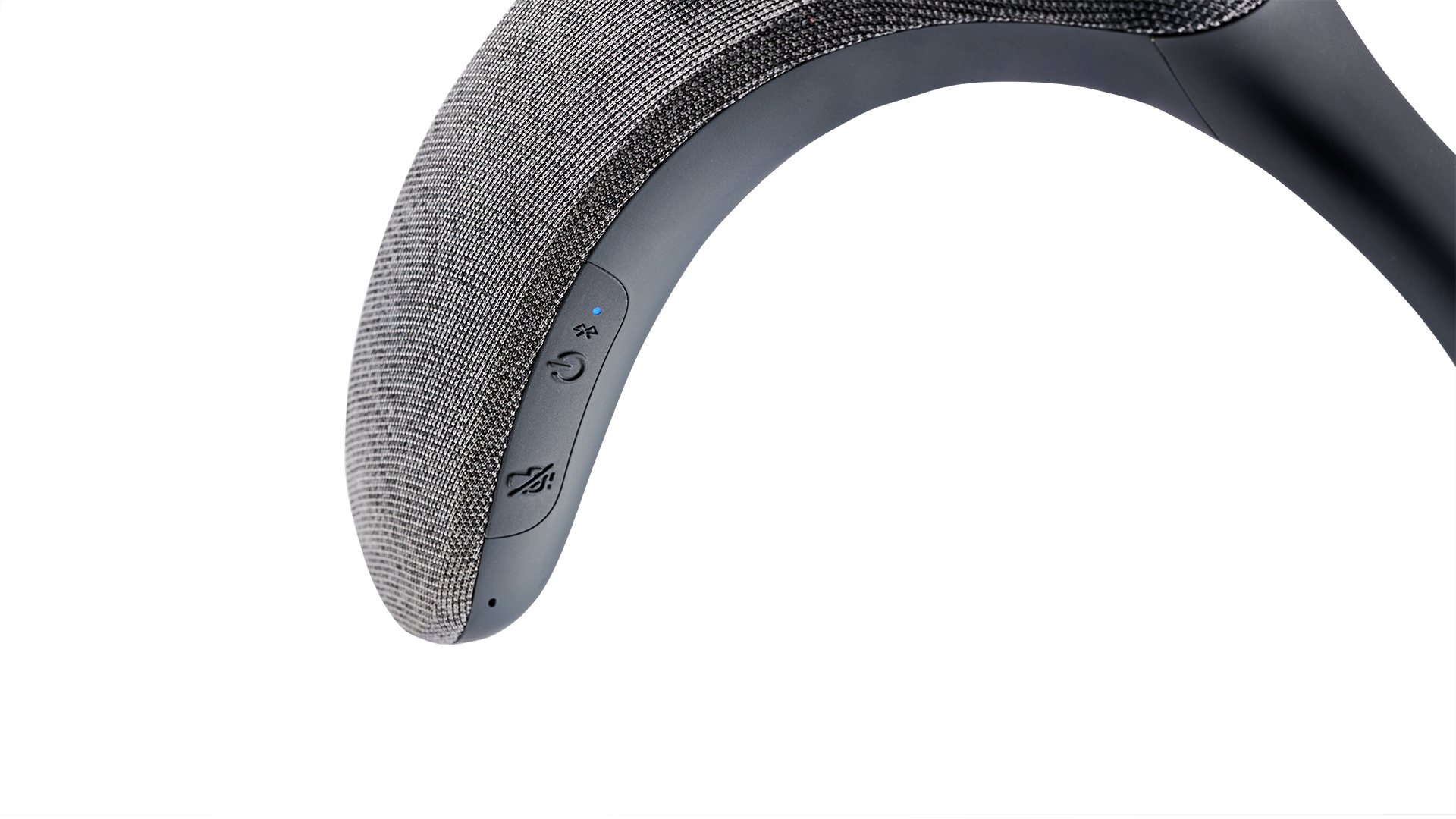
Swapping back to Atmos, we watch the car chase sequence in The Batman on Blu-ray. With this dense soundscape full of ominous low orchestral instruments, roaring traffic and gunshots, there’s a loss of coherence, and the experience is quite claustrophobic. Impactful bassy sounds are an issue for the small drivers within the SRS-NS7, and there’s frequently distortion when listening at higher volumes. Unfortunately, when watching in Atmos, that lack of clarity and the diluted vocals results in us consistently running the speakers at maximum volume. Low frequencies also cause the neckband to vibrate considerably, which some may find distracting.
Streaming Biffy Clyro’s Space in Sony 360 audio from Tidal, there’s a nice spread of the guitars and strings, though tonally, the music lacks depth, weight and drive. Swapping to the non-360 version is louder, less diffused, with more immediacy and dynamics, though there is still some low-end distortion and a slightly tinny top end.
The crisp, bright quality of the SRS-NS7 does make it well suited for taking calls and with excellent echo and feedback rejection. Likewise, it’s a decent alternative to a gaming headset, as the defined soundscapes of a first-person perspective translate slightly better to these small nearfield drivers.
Verdict
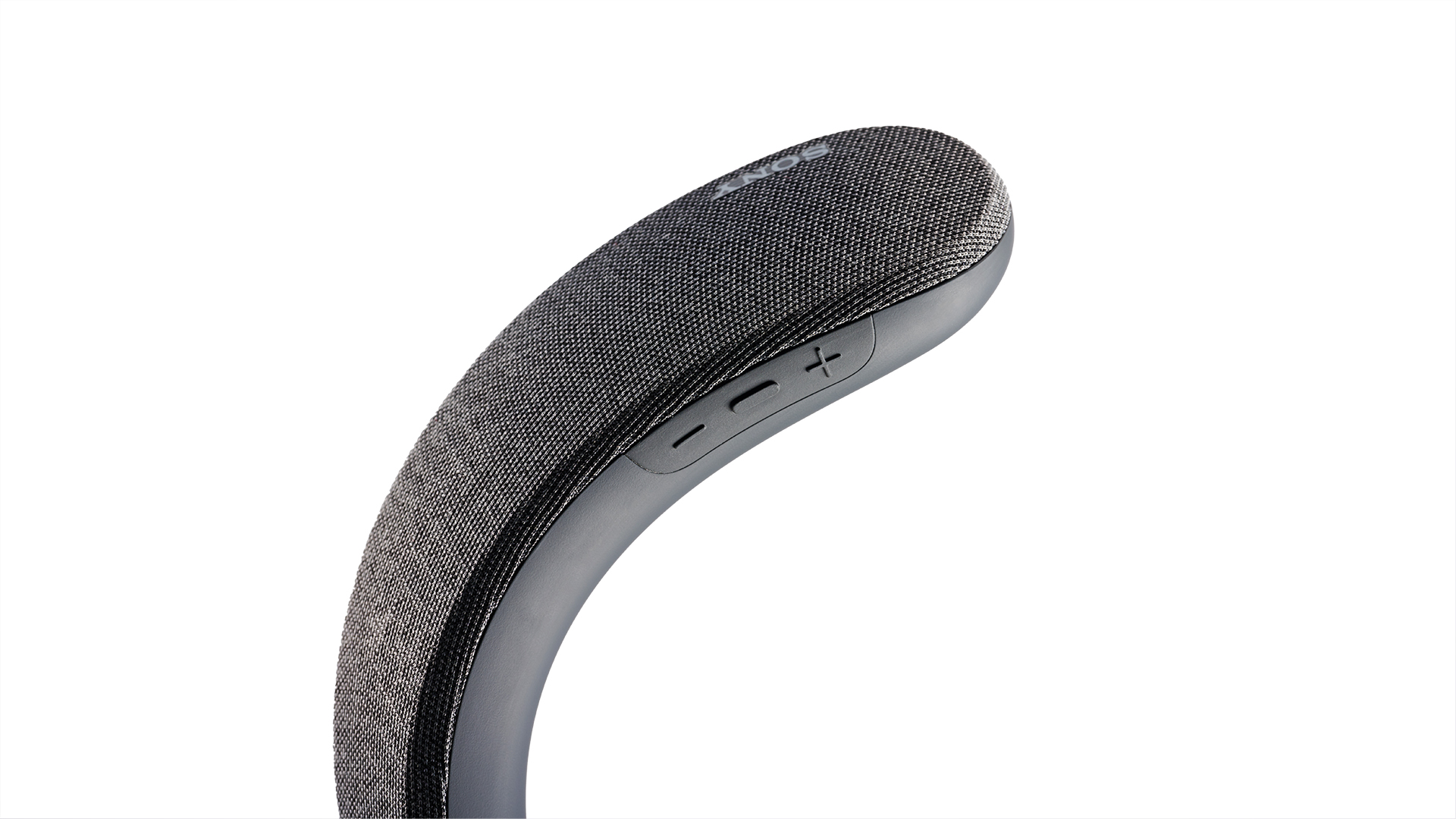
The writer Emma Goldman once said, “I’d rather have roses on my table than diamonds on my neck,” but with its premium wearable speaker, the SRS-NS7, Sony poses us with something of a more modern dilemma – would you rather have a soundbar on your credenza or a Dolby Atmos speaker on your neck?
The SRS-NS7 is an innovative and capable wearable speaker that can provide clear functional audio for an individual user. However, the neckband is still subject to the limitations of very small drivers, with a lacklustre low end, and the addition of Dolby Atmos support, unfortunately, isn’t well executed. As an alternative to headphones, the SRS-NS7 has practical benefits that might appeal to some; however, those looking for an immersive bubble of sound for their home cinema viewing will be disappointed.
SCORES
- Build 4
- Sound 3
- Features 4
MORE:
Read our review of the Sony WH-1000XM5
Also consider the Apple AirPods Max
Here's our review of the Sonos Beam Gen 2
What Hi-Fi?, founded in 1976, is the world's leading independent guide to buying and owning hi-fi and home entertainment products. Our comprehensive tests help you buy the very best for your money, with our advice sections giving you step-by-step information on how to get even more from your music and movies. Everything is tested by our dedicated team of in-house reviewers in our custom-built test rooms in London, Reading and Bath. Our coveted five-star rating and Awards are recognised all over the world as the ultimate seal of approval, so you can buy with absolute confidence.
-
Friesiansam Reply
Indeed, V8 10,356cc Chevy big block, crate engine. https://www.chevrolet.com/performance-parts/crate-engines/big-block/zz-632Bloke said:Lacklustre eh? No substitute for cubic inches.

